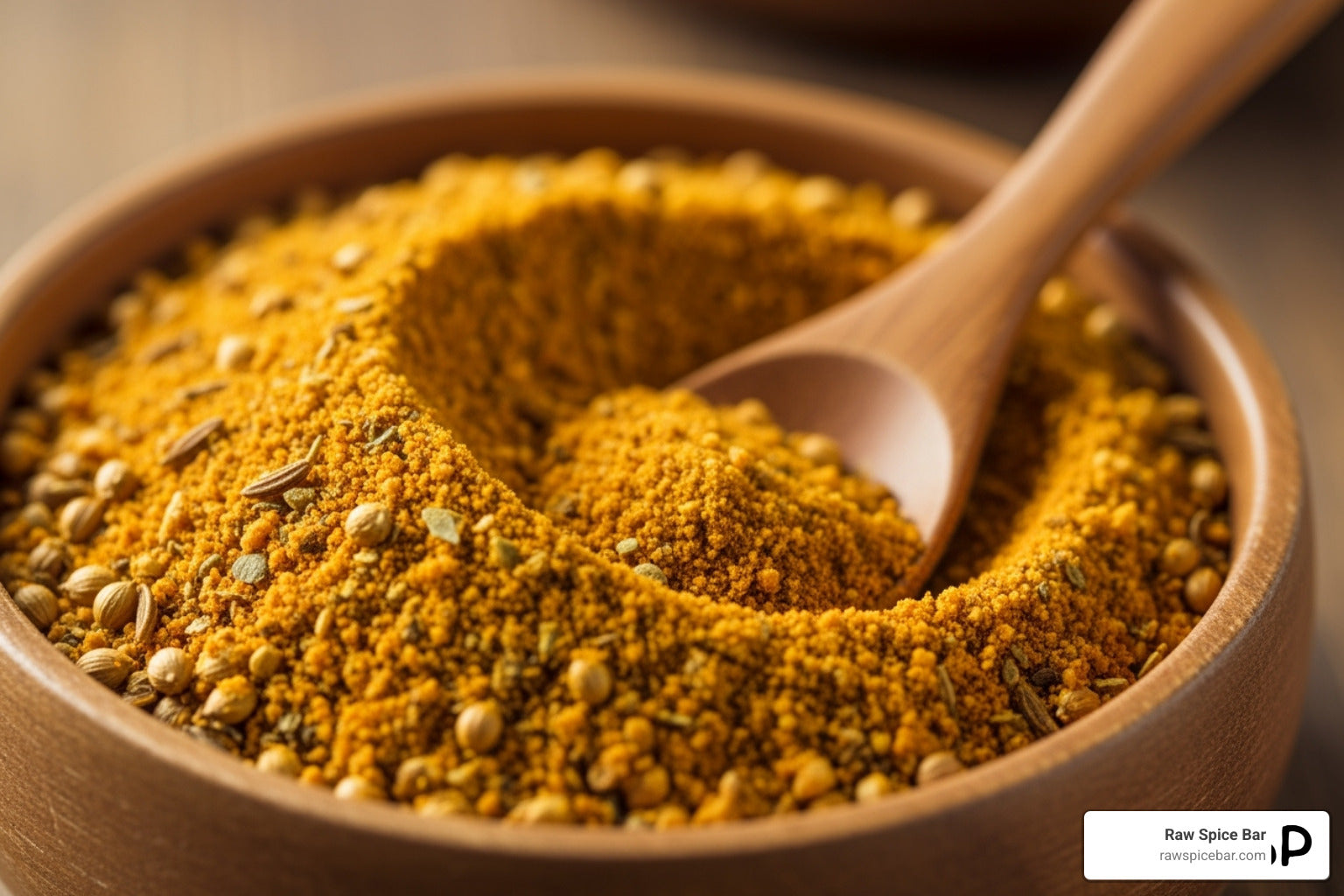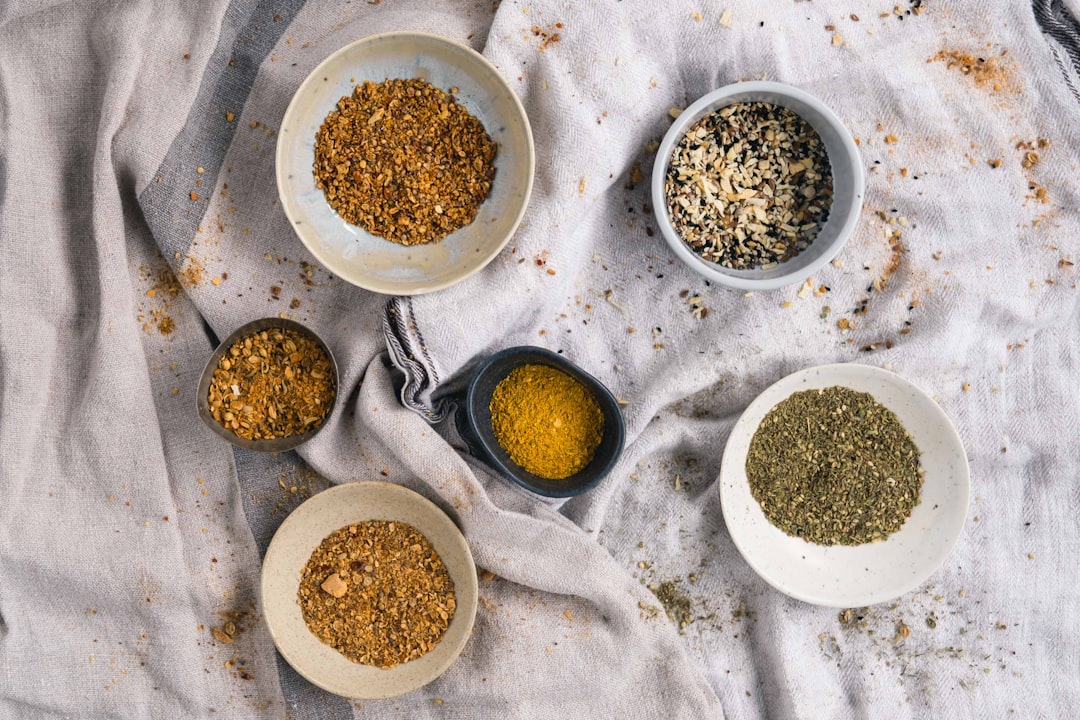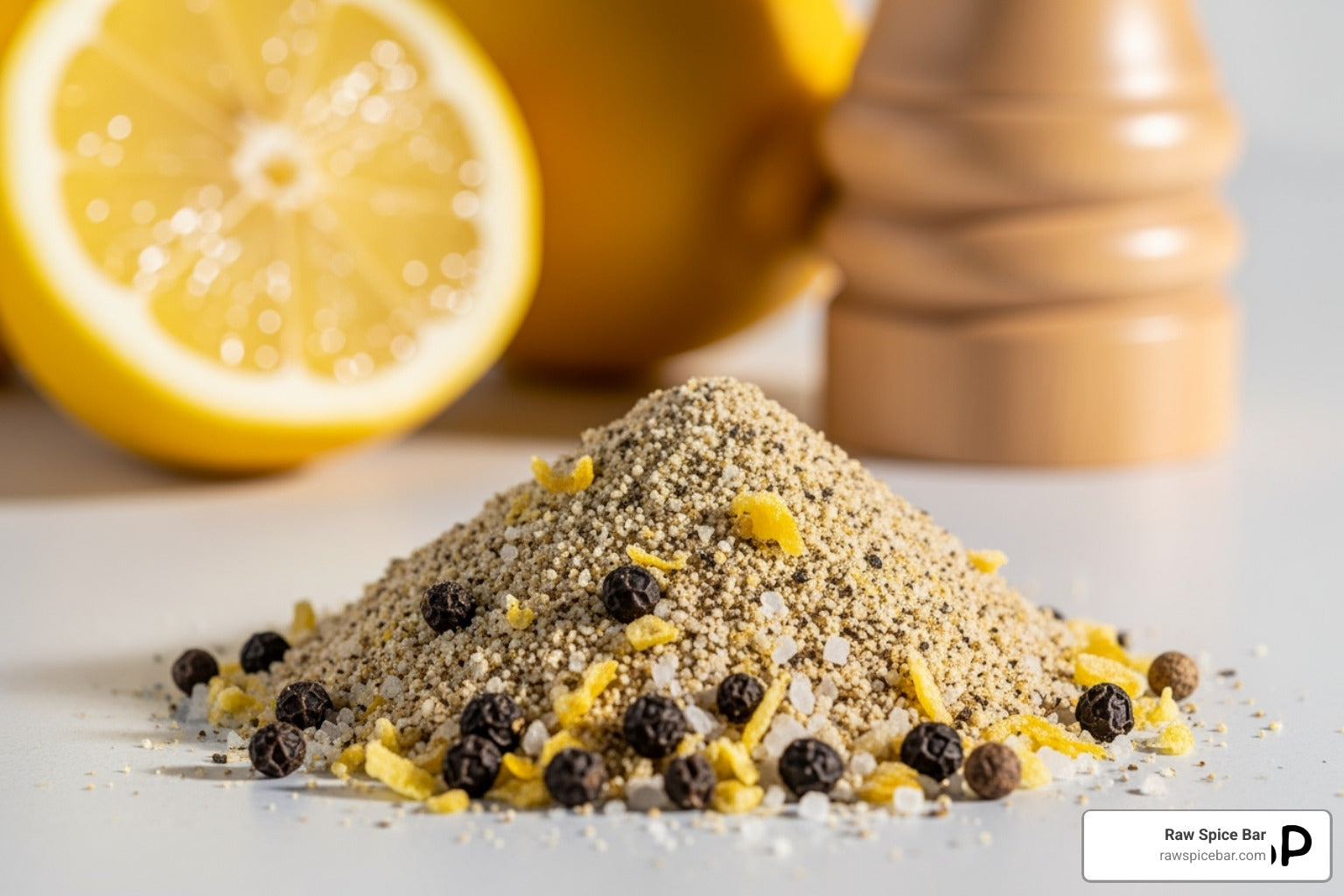Ever wonder where the vibrant and flavorful spice, paprika, comes from?
Paprika is a ground spice made from dried red peppers, originating from Hungary and Spain. It's known for its distinct red color and varying flavors, which can be sweet, spicy, or even smoked, depending on the peppers and preparation method. This unique spice has become a kitchen staple around the world, adding color and depth to countless dishes. At Raw Spice Bar, we take the art of spice blending seriously.
We specialize in creating spice blends that make tasty dishes from around the world. Our global spice subscription offers a fun and easy way to explore seasonal cooking, delivering freshly blended spices right to your door. With recipe cards included, you'll have everything you need to add authentic, healthy flavor to your meals.
Origins of Paprika
Paprika traces its roots back to the vibrant cultures and regions that cultivated the spice. It’s known for its rich history and varied geographical spread, which have greatly influenced its characteristics.
Historical Background
Paprika originates from peppers native to Central America, where it was used by indigenous peoples.
When Spanish explorers returned with peppers in the 16th century, they introduced them to Europe. Over time, these peppers were cultivated in Hungary and Spain, two countries known for developing their unique paprika varieties.
In Hungary, paprika became a staple, defining many of their traditional dishes. The spice was further refined and categorized into different types, such as sweet and hot, adding versatility to its culinary use.
Geographical Distribution
Today, paprika is mostly produced in Hungary and Spain, each region offering distinct flavors. Hungarian paprika is often sun-dried and varies from mild to very hot. Spanish paprika, or pimentón, is typically smoked over oak wood, giving it a unique smoky flavor. In addition to European production, paprika is now grown in other parts of the world, including the United States and South America.
Types of Paprika
Paprika is a versatile spice with varieties ranging from sweet to spicy. Each type has unique characteristics in flavor and use, making it essential to select the right one for your dish.
Sweet Paprika
Sweet paprika is the mildest form of this spice. It provides a vibrant red color without adding much heat. The flavor is earthy and slightly fruity, which makes it perfect for adding depth to dishes like stews, soups, and sauces. Sweet paprika is often used in Hungarian cuisine.
Hot Paprika
Hot paprika brings a spicy kick. Unlike sweet paprika, hot paprika adds both color and heat to your dishes. This makes it a great choice if you like spicy foods and want to elevate recipes such as chili or grilled meats. The heat level can vary, so it’s wise to taste it before using.
Add it in small amounts to control the spice level in your dishes. It can also be mixed with other spices for a balanced flavor.
Smoked Paprika
Smoked paprika, also known as pimentón, is made by smoking peppers over a wood fire before grinding them into powder. It adds a smoky, rich flavor and is often used in Spanish cuisine. This type of paprika can transform simple dishes like roasted potatoes or grilled vegetables into flavorsome delights. It’s a fantastic ingredient for creating marinades and rubs as well, particularly for meats.
Cultivation
Understanding paprika involves knowing how and where it's grown. Successful cultivation requires attention to the soil and climate, followed by deliberate farming practices to ensure high-quality produce.
Soil and Climate Requirements
Paprika thrives in well-drained, sandy loam soils rich in organic matter. The pH level should ideally be between 6.0 and 7.0. These conditions help the peppers absorb nutrients effectively, leading to vibrant flavors.
Moderate and consistent temperature is crucial. Ideal temperature ranges are between 18°C and 30°C (64°F to 86°F). Although grown in various regions, paprika peppers grow best with warm days and cool nights, which facilitates the development of their color and aroma. Proper humidity levels are important to preventing diseases that can affect plants.
Farming Practices
Effective farming practices start with choosing quality seeds, to help ensure a healthy yield. Care in seed selection reflects in the final product's taste and aroma.
Irrigation should be consistent but not excessive, as overwatering can cause root rot. Regular monitoring for pests and diseases is crucial. Using organic pest control methods maintains plant health. Crop rotation and proper spacing between plants help manage soil nutrients and reduce disease spread, contributing to the quality you expect from a trusted global spice subscription service.
Harvesting
Harvesting paprika involves precise timing and careful handling to maintain flavor and color. Once picked, the peppers are prepared for drying and grinding, creating versatile spice blends.
Harvesting Techniques
The process of harvesting paprika begins with selecting ripe peppers. These are typically bright red, indicating maturity and optimal flavor. Timing is crucial as picking too early or late can affect quality. You may see farmers hand-picking peppers to prevent bruising, which can spoil the spice. Field workers will often use baskets or bins for collection, ensuring the peppers remain intact during transport.
Processing Fresh Peppers
Once harvested, peppers need proper cleaning and sorting. Removing dirt and debris is the first step, often done with water and gentle brushes.
Next, peppers are dried, either in the sun or in controlled environments. Sun drying is the traditional and often preferred method, allowing the peppers to develop deeper flavors. Controlled drying can be more consistent, preventing moisture issues. Once dried, peppers are ground into paprika. This process requires attention to achieve the desired texture and flavor.
Drying Methods
Drying is the initial step in creating paprika. Traditionally, Hungarian paprika uses sun-drying, which helps preserve its bright color and develop a mild sweetness.
On the other hand, Spanish paprika often employs smoking over oak logs. This method infuses the peppers with a rich, smoky flavor, essential for dishes looking for a bold taste.
Sun-drying relies on natural sunlight, allowing moisture to evaporate slowly. This process is simple but effective, maintaining the peppers' natural essence. Alternatively, the smoking method involves an extended drying period. Peppers are hung in smokehouses, absorbing smoky aromas. This gives Spanish paprika its distinctive taste. Each process shapes the spice profile, offering diverse cooking options for your meals.
Grinding Procedures
Once dried, the peppers are ground into a fine powder. This step transforms the dried peppers into the vibrant red paprika spice you find in your kitchen.
Depending on the desired heat level, seeds may be included or removed during grinding. To achieve sweet paprika, seeds are usually excluded, while hot varieties retain them for added spice. Consistency is key; the finer the grind, the more evenly the paprika can be used, enhancing flavor distribution in dishes.
Quality and Grading
Understanding the quality and grading of paprika ensures you get the most flavor from your spice. Different grading systems exist, and production quality control is vital to maintain standards across varieties.
Grading Systems
Paprika is graded based on color, flavor, and heat. Grades vary depending on the country and type.
Hungarian paprika may be graded by its pungency and sweetness, while Spanish paprika might focus on its smoked qualities. You might encounter terms like "premium" or "standard," impacting the spice's quality and price. Color is a key indicator of quality. Bright red suggests high quality with potent flavors. The grading process ensures that paprikas meet specific standards so that you enjoy the desired taste and aroma.
Quality Control
Quality control in paprika production involves strict procedures. From sourcing the freshest peppers to ensuring consistent drying and grinding, every step is crucial. Spice batches are checked for impurities and processed to ensure only the highest quality.
Culinary Uses
Paprika is a versatile spice used in a variety of dishes worldwide. It adds vibrant color and a mild, sweet flavor to foods. Often sprinkled on deviled eggs or potato salads, paprika is a favorite garnish that enhances both appearance and taste. Its colorful presence brightens any dish, making it more inviting.
For example, try adding paprika to chicken or beef for a subtly sweet and smoky flavor. You can also mix it into soups and stews to create a rich and deep taste. Its versatility makes it suitable for many recipes.
Here are some common uses for paprika:
-
Goulash: A hearty stew where paprika is key for its signature taste.
-
Dry Rubs: Use paprika in spice rubs for meats like ribs or chicken, adding depth and color.
-
Rubs & Marinades: Perfect for spicing up grilled vegetables or fish.
For those who enjoy exploring culinary traditions, paprika opens up new ways to experiment in the kitchen. Whether you're using it in a classic dish or trying a new recipe, this spice can add a delightful twist to your meal.
Health Benefits and Nutritional Value
Paprika is more than just a spice that adds color and flavor to your dishes. It offers various nutritional benefits that can support a healthy diet.
Paprika is rich in vitamins such as A, E, and B6, which are essential for maintaining good vision, healthy skin, and a strong immune system. These vitamins also contribute to improved blood health.
In addition to vitamins, paprika contains minerals like iron and potassium, which are important for maintaining healthy blood pressure and promoting proper muscle function.
Nutritional Value (per tablespoon):
-
Calories: 19
-
Carbohydrates: 4g
-
Protein: 1g
-
Fat: 1g
The spice is also a good source of antioxidants, which help protect your cells from damage caused by free radicals. This can reduce the risk of chronic diseases.
Packaging and Storage
To keep your paprika fresh, it should be stored properly. You'll want to keep it in an airtight container to prevent air and moisture from affecting its flavor. Make sure the container is kept away from direct sunlight and heat to maintain its vibrant color and taste.
A cool, dark pantry is the best place for storing paprika. This helps preserve its quality for as long as possible. Proper storage can allow your paprika to retain its rich flavors and vivid hues for up to a year.
If you're serious about spices, consider getting a subscription with us at Raw Spice Bar. Our spices are delivered within 60 days of hand blending, ensuring you receive the freshest spices possible.
Global Trade and Distribution
Paprika's journey from farm to table involves a wide network of global trade and distribution. This spice is primarily produced in countries like Hungary and Spain, which are known for their high-quality paprika varieties.
Hungarian paprika is often sun-dried, while Spanish paprika is typically smoked, giving each a unique flavor profile. The distribution process begins with the harvesting of red peppers, which are then dried and ground into paprika. Once the spice is processed, it enters the international market. Exporters specialize in ensuring that paprika reaches various parts of the world efficiently and in good condition.
The logistics of distributing spices involve warehousing, transportation, and customs processes. Most paprika is shipped in bulk to different countries, where it is packaged or further blended into spice mixes. This allows consumers worldwide access to one of the most popular and versatile spices.
Frequently Asked Questions
What is the process involved in making paprika?
Paprika is created by grinding dried peppers into a fine powder. The peppers are harvested, dried, and then ground to achieve the desired texture. This process can differ based on the type of paprika, such as sweet, smoked, or hot.
What are the primary ingredients used to produce smoked paprika?
Smoked paprika is made from peppers that are smoked over oak logs before being ground. This method gives it a distinct smoky flavor, popular in Spanish cuisine. The type of peppers used can vary, but the smoking process is essential.
How does the creation of paprika differ from that of cayenne?
While both paprika and cayenne are derived from dried peppers, they come from different varieties. Paprika is more versatile in color and flavor, with sweet, hot, and smoked varieties. Cayenne usually has a hotter profile and uses different drying and processing methods.
What types of peppers are suitable for creating paprika?
Paprika can be made from a range of peppers, primarily from the Capsicum annuum family. Common varieties include sweet bell peppers and spicy chili peppers. Choice of pepper influences the flavor and level of heat of the final product.
In what ways is paprika typically utilized in cooking?
Paprika is a key ingredient in many recipes, adding color and a range of flavors. It is used in soups, stews, rubs, and marinades. Smoked paprika is often used to impart a smoky flavor without needing a grill.
Can one make their own paprika at home, and if so, how?
Yes, you can make paprika at home by selecting your preferred peppers.
Dry the peppers thoroughly, then grind them into a powder using a spice grinder. Experiment with different types of peppers to find your preferred taste and heat level.




